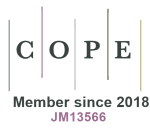Most read articles by the same author(s)
- Domenico Rendina, Gianpaolo De Filippo, Pasquale Strazzullo, Clinical Management of Patients with Nephrolithiasis: Ad Hoc Trials are Needed , Giornale di Clinica Nefrologica e Dialisi: Vol. 26 No. 3 (2014): July-September 2014










